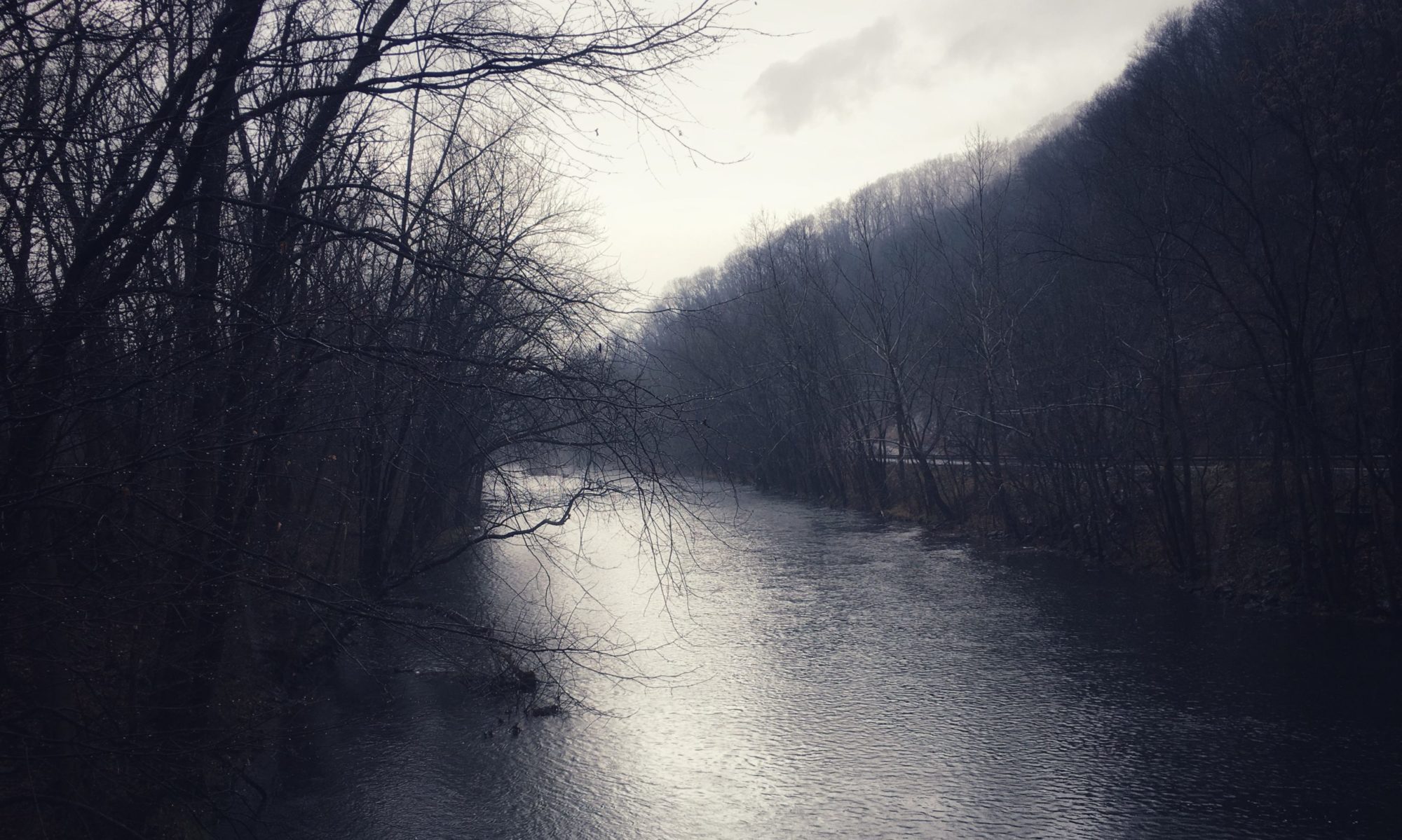
“A trident cooking hearth does not spill stew.” With this piece of wisdom, gleaned from a book of Yoruba proverbs, my friend L. had wished me an emailed bon voyage. Now it’s 9:00 a.m. on the Saturday before Thanksgiving. I’ve been on the road since 6:30 the previous evening and have made it as far as Indianapolis.
Over the summer, Greyhound eliminated a number of routes to more rural, less popular destinations, which is why someone traveling between such minor cities as Altoona, Pennsylvania and Cleveland, Mississippi might find himself routed through St. Louis. “New faster service,” crow the posters inside the terminal. “Stop less. Go more.” And indeed, my layover in Indianapolis has only lasted fifty minutes – but this would prove to be the exception. In all, on the way to Mississippi I’ll spend more than sixteen of my thirty-eight hours of travel time in “stop” mode, including a five hour and fifty minute layover in St. Louis, coming up this afternoon.
I’ve just reboarded the St. Louis bus. Sunlight floods the space under the high arched roof where the buses pull in. Directly across from me on the other side of the terminal’s glass wall, an African-American teenager talks on his cellphone. He pivots restlessly on one foot, left arm behind his back, baseball cap turned sideways. Every time he opens his mouth to laugh, which is often, the sun flashes on a full set of braces – a dazzling sight. I feel as if I am intercepting a coded message from the agent of some previously unknown, possibly angelic power: FLASH. FLASH FLASH FLASH. FLASH. FLASH.
Going Greyhound has always been a somewhat surreal experience; over the last few years, the growing popularity of cellphones has added an extra layer of weirdness. Now you get to hear what a lot of people are thinking about, beyond those who habitually talk to themselves. Not that this knowledge is always especially welcome. In the seat in front of me a thin, blond, thirty-something woman with a T-shirt that says “Naughty” dials several numbers with no apparent success. Or perhaps she is dialing the same number over and over, waiting for the other party to wake up and answer the phone.
At last she gets someone, and dispenses with the usual salutation. “I’m gonna press charges against you,” I hear her say. “I’m gonna press charges against you.” Pause. “I said, I’m gonna press charges against you.” Pause. “I’m gonna press charges against you.” Shorter pause. “Yeah, asshole, I’m gonna press charges against you. For assault. For assault.” Pause. “For assault.” Pause. “And that’s a mandatory jail time, mandatory jail time.” Pause. “That’s a mandatory jail time.”
She snaps the phone shut, puts it in her pocket and goes back to staring out the window.
The seat beside me remains empty. Last night at Dayton, the young black guy who had been sitting there since Columbus decided to move one seat back, in order to sit beside the older white woman who had made a complimentary remark about his butt when she squeezed past him in the crowded aisle. “You seem kind of friendly,” he said to her, adding quickly, “No offense – ” to me – “but if I should happen to fall asleep and end up falling into someone’s lap by mistake… you know…” We all laugh.
“I have a husband waiting for me in Indianapolis,” the woman warns, clearly flattered. “Oh, that’s O.K., baby. I’ll just be warming you up for him!”
Across the aisle, a woman takes a book from her bag and begins to read. I don’t get a glimpse of the cover, but I can read the bold letters at the top of each page: PROPHESY. Panama Hat Man stretches out across the two seats in front of her, and takes his dark glasses off. This is the first I’ve seen his eyes since I ran into him in line at the Columbus terminal. Now that the sun’s out, it seems, he has no further use for dark glasses.
Panama Hat Man is taking crazy pills, and for some reason he wants the world to know about it. He’s in his fifties, short, stocky, of indeterminate ethnicity – a Pacific Islander, I decide, since he says he’s going back to Hawaii, though he also told me he grew up in New Jersey. We’d been riding the same bus since Pittsburgh, but I’d managed to avoid conversation with him until Columbus, when he suddenly turned to me, pulled one earphone out and said, “I’m listening to some Jewish music I picked up in New Jersey. Bush likes it.”
I stared at him. “You mean, a klesmer band?”
“I don’t know… they’re from Rutgers. My Dad bought it for me.
“My Dad’s nice,” he continues. “He bought me a bus ticket clear to L.A., and nine hundred dollars worth of pills.” He shows me two plastic bottles full of brightly colored gel caps nestled in the breast pocket of his jean jacket. “I think he wanted to get rid of me.”
“Oh, yeah?”
“Yeah. But actually, I think it’s a test. He’s trying to show he trusts me. Wants me to prove myself to him.”
Time spent in bus terminals is always tense with waiting; it’s all too easy to miss a connection, or to end up too far back in line to get a good seat. But once on the bus, all worries evaporate – at least, for me. Others, perhaps, continue to marinate in a stew of personal traumas. As we pull away from the terminal, cellphone conversations gradually peter out, and the engine and blowers combine to make a comforting envelope of white noise in which to doze or daydream. I re-enter a state of almost timeless suspension, floating over the landscape like a passenger on a very low, slow plane. St. Louis, here I come.




























